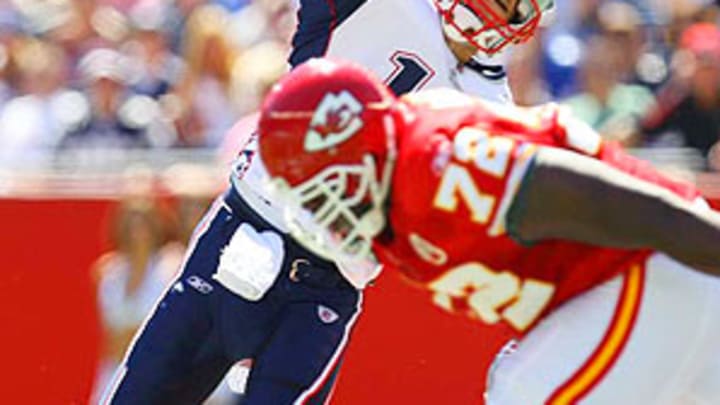Doctors offer no guarantees to NFL players who suffer knee injuries


Tom Brady doesn't use his knees the same way LaDainian Tomlinson uses his. It's different for running backs and defensive backs and wide receivers, who are asked to cut and twist and stop on a dime. But Brady's left knee injury and the infections and complications that followed his surgery are proof that no athlete is guaranteed a smooth return to the game, no matter how hard he rehabs, no matter how far medicine has come.
Two months after his season ended against the Kansas City Chiefs, Brady is back with his team in Foxborough, Mass., working out and no doubt aiming for a return to the field in 2009. For the rest of his career, though, Brady will be watched by opposing teams (and the public) even more closely than he was before his injury. They will be looking for any sign of weakness, any vulnerability that says he isn't the same quarterback he was before.
The American Journal of Sports Medicine recently released a study chronicling the fate of NFL players who sustain ACL injuries. Only about three out of four players who tore the ligament were able to return to the game.
"It's kind of frightening," said Dr. James Gladstone, associate professor and co-chair of the sports medicine service at the department of orthopedics at Mount Sinai School of Medicine in New York City. "Of the players that made it back, they were performing at about 66 percent of the level prior to their injury, so it's not a given that you are going to get back, and if you do get back, it's not a given that you will play at the same level."
Luckily for Brady, his position does not depend on speed, burst and acceleration like other players on the field. But he will still need to recapture the strength and subtle mobility that every quarterback depends on in the pocket. Peyton Manning, who had two offseason surgeries on his left knee and also dealt with a staph infection in its aftermath, is just now rounding into the form we are accustomed to seeing.
Gladstone says NFL franchises in recent years have incorporated offseason regimens to strengthen players' knees, a kind of preemptive strike against the rigors of the game.
"Most teams have ACL [injury] prevention training programs in place to help get the nerves that control the coordination of the knee working as well as possible," Gladstone said. "There have been a number of studies showing that preseason ACL programs lower the incident of ACL injury."
But the laws of physics and the stresses inherent with colliding bodies in the NFL make some injuries unavoidable, Gladstone says.
"When you have a 280-pound guy falling on you while you're trying to change direction, the knee is just giving up," he said. "As the equipment gets better, you can protect against more severe concussions to a greater extent, but I don't think you are going to prevent them altogether if you hit your head in the wrong way. To limit neck injuries they use cowboy collars, but if you end up spearing someone or falling directly on your head, there isn't much you can do to help the neck from going. It's the same with ACLs."
Gladstone, who has treated patients as young as 10 and old as 85, says he has a collection of videos of NFL players tearing their ACLs, the sight of the knee giving way, the occasional "pop" sound that accompanies the injury, the pain and swelling that follows.
"You see [the offensive and defensive] lines hitting each other or defenders converging on someone running the ball and the head is going one way, the body is going another way and the legs are going another way," Gladstone said. "It's the rapid deceleration and the quick changing of direction, and cutting, that leads to these injuries. More than anything else, it's the nature of the sport."
In many ways, the 2008 season will be remembered for the year that Brady went down and the league became wide open. Gladstone, for one, will remember what he thought the moment he heard Brady got hurt.
"I thought about him being the face of the team and what [the injury] meant for [the Patriots]," Gladstone said. "But I'm never surprised when I hear about someone getting that kind of injury. I'm surprised they don't happen more often than they do. The fact that Tom Brady tore his ACL shows that the injury doesn't show respect for anyone."
